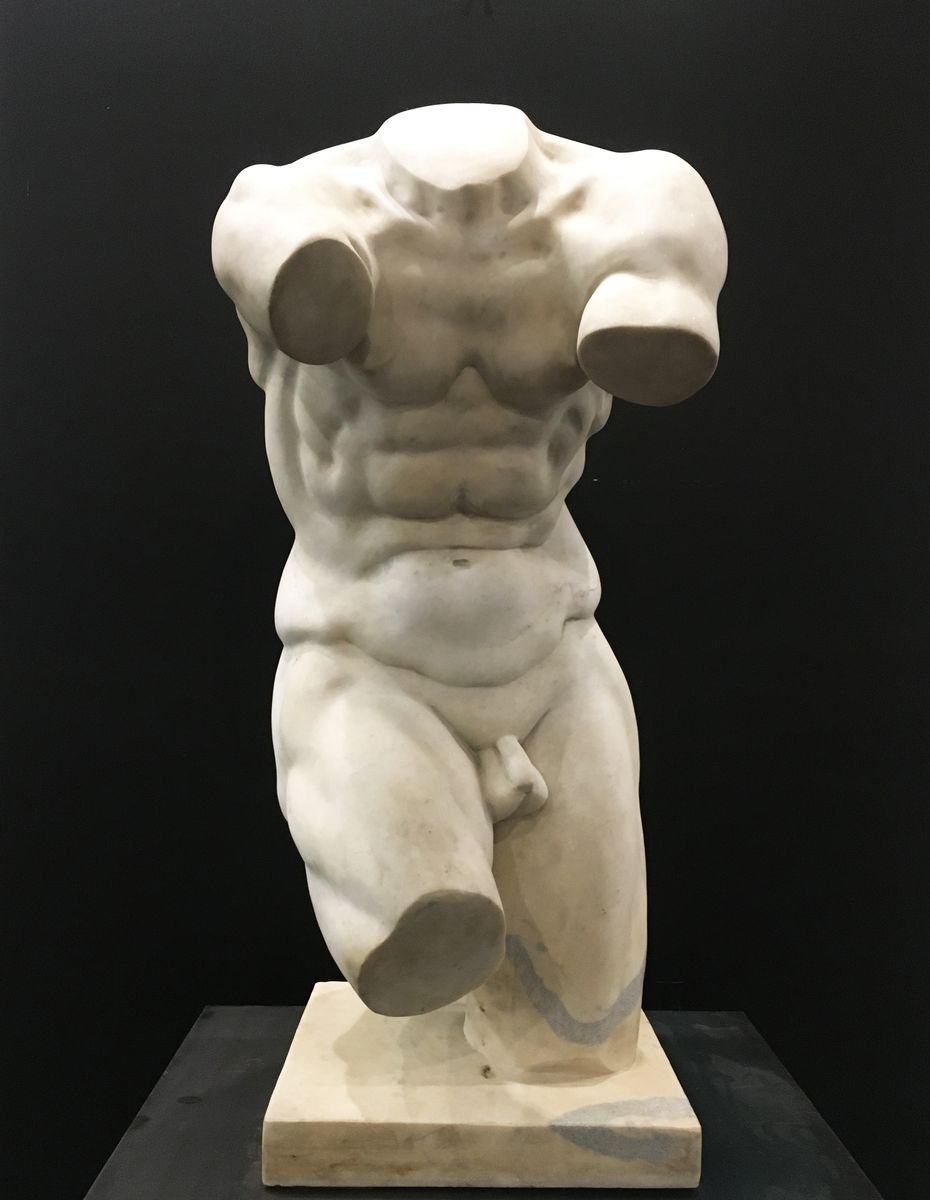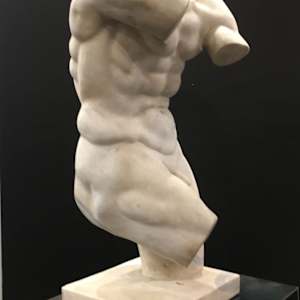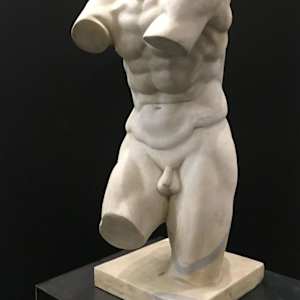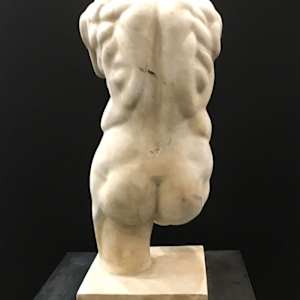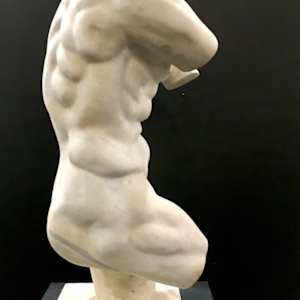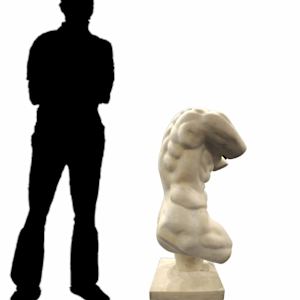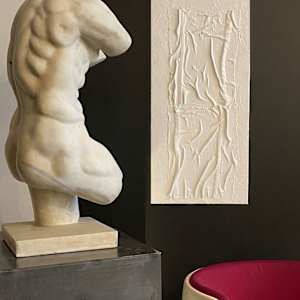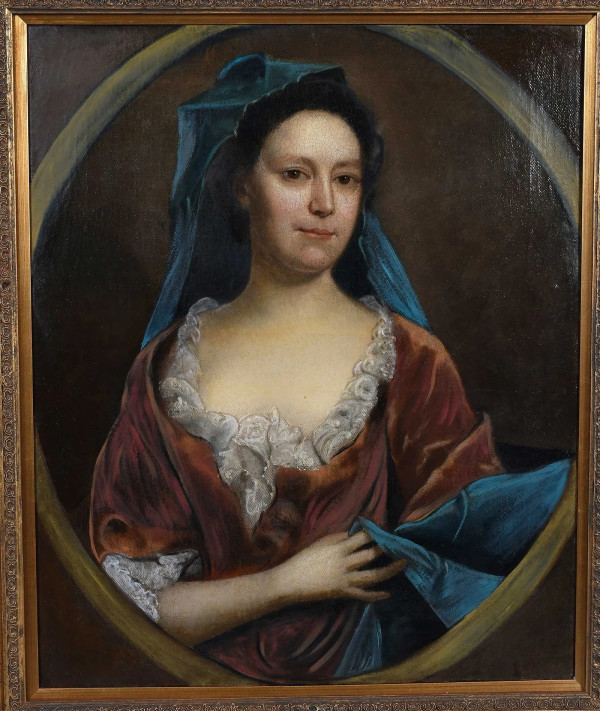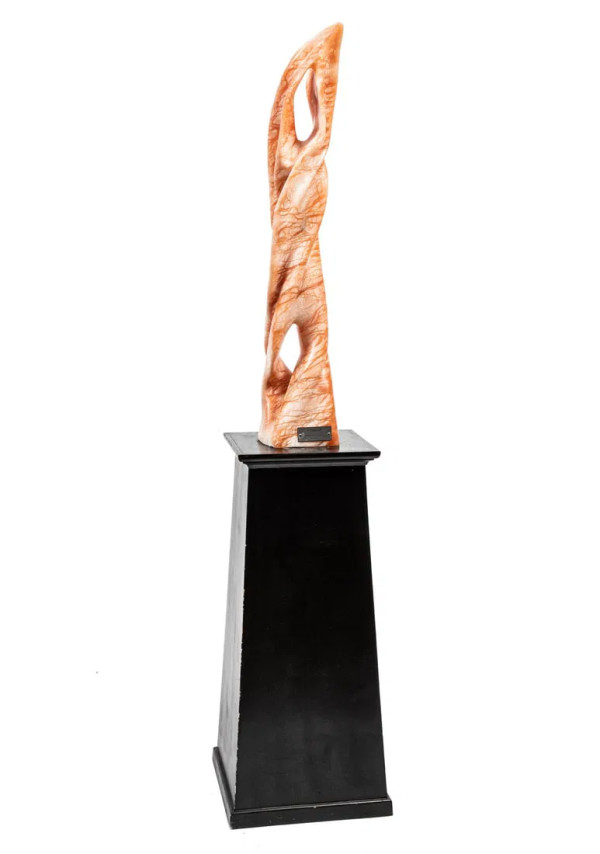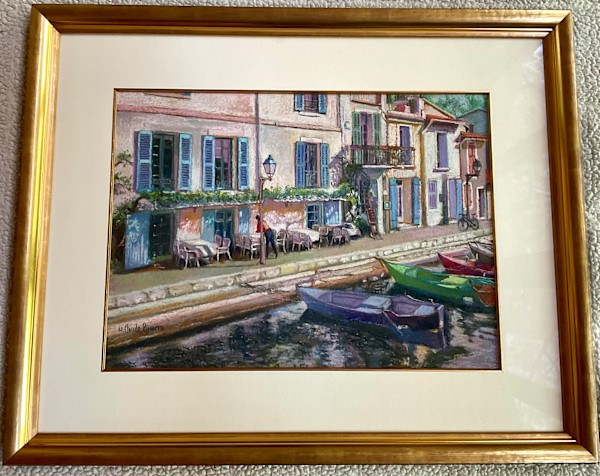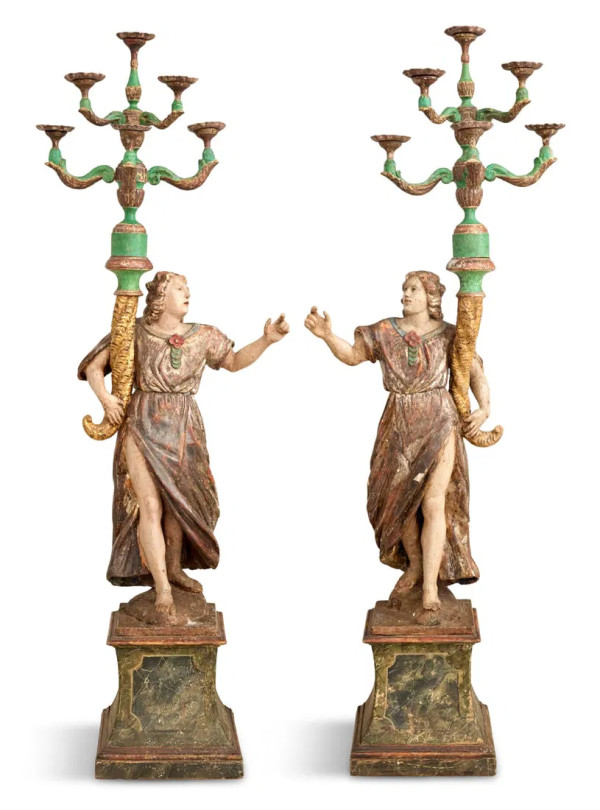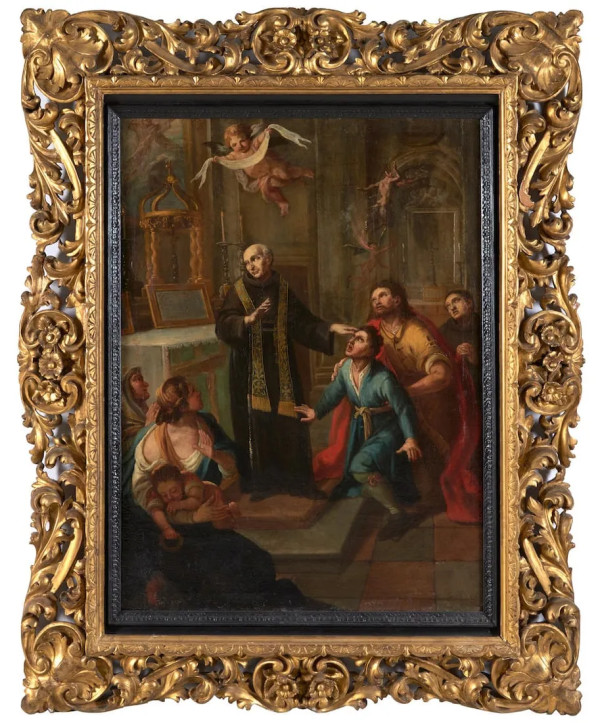A marble sculpture of a headless, armless and legless man supported on one leg whose identity is unknown. The contorted pose and musculature of this style torso were highly influential on Renaissance, Mannerist, and Baroque artists, including Michelangelo and Raphael, and often served as a catalyst of the classical revival.
Once believed to be an original, the marble sculpture is likely a copy of a Greek bronze original likely dating from the 2nd century BC. The man with contorted torso was traditionally believed to be Heracles, the son of Zeus, but other possibilities include Hercules, Ajax, Polyphemus, the giant son of Poseidon or the satyr Marsyas.
Alongside the craftsmanship of the unknown author of the Torso, one must admire the expressivity of the pose that conveys the sense of internal struggle so elegantly. This offers the viewer a near perfect rendition of the human form, from the proportions, to the bones, muscles, and veins.
Particularly enthralling is the three-dimensionality of the statue. The Torso, however, can be walked around, and appreciated from every possible angle.
- Subject Matter: Historical Scene
- Collections: Von Schmidt Family Trust Statuary and Textiles Collection
